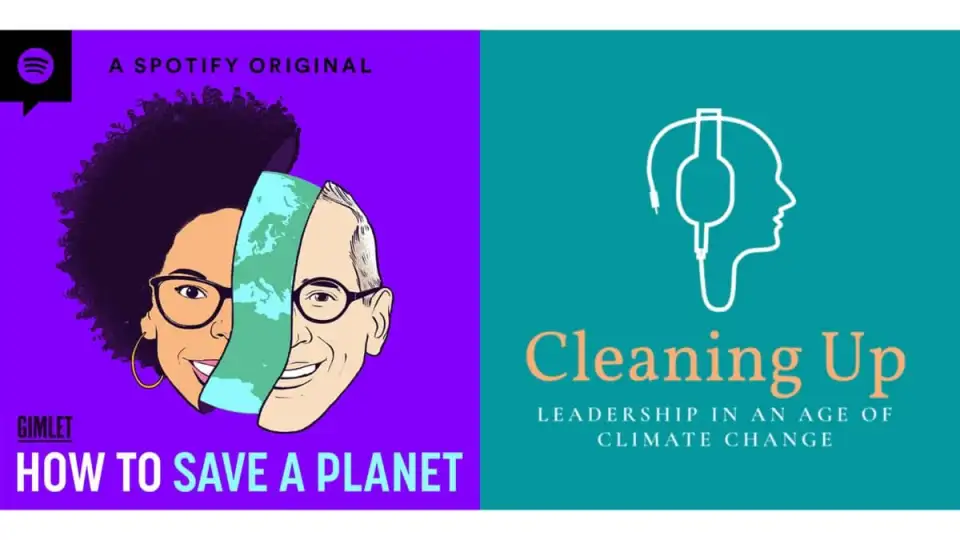
Having just launched the Passive House Podcast with host Matthew Cutler-Welsh and intern Sydney Fishman, I’ve been listening to a lot of podcasts lately for inspiration. (Scroll down for links to the Passive House Podcast’s intro episode as well as episodes 1 and 2, found in “Related Articles” at the bottom of this post).
Two new podcasts that have risen to the top for me are How to Save a Planet: Earthlings, We’ve Got Work to Do, with scientist Dr. Ayana Elizabeth Johnson and journalist Alex Blumberg and Cleaning Up: Leadership in the Age of Climate Change, with clean energy transition leader and prognosticator Michael Liebreich (founder of Bloomberg New Energy Finance).
While both podcasts delve into the imperative of climate action, they really are quite different from one another. How to Save a Planet brings the production values of a Radio Lab or 99% Invisible and is pitched for a general audience. Cleaning Up, on the other hand, is basically a Zoom recording that dives deep into the weeds of climate policy and energy geekery.
But both are excellent, and this past week the two shows’ episodes converged and complemented each other in ways that I think Passive House Accelerator readers would appreciate. So I thought I’d share them with you all.
How to Save a Planet’s episode, “The Green Wave” describes the emergence of the Green New Deal in American political discourse and the role of the IPCC Special Report on the Impacts of Global Warming of 1.5°C in guiding the prescriptions contained in the Green New Deal. It goes on to describe the astonishing progress in Europe in passing the European Green Deal, and the role that Great Thunberg’s School Strikes for Climate had on making that happen. As frustrating as American climate politics are right now, hearing the story of progress around the Europe Green Deal was really inspiring…and there are direct connections between the activism of the youth climate warriors of the Sunrise Movement and that progress in Europe.
When kids take to the streets real change can happen.
If How to Save a Planet’s episode was about the power of kids to achieve climate progress, Cleaning Up’s interview with Christiana Figueres was about the power of women leaders to do the same. (Honestly, women should just be in charge of everything important at this point. I wager that if we tried it for the 2020s there’d be no going back.)
As you probably know, Figueres was the leader that helped pull together 195 countries to make the Paris Climate Agreement happen in 2015. In her interview with Liebreich she describes how her distributed leadership style helped lay the foundation for that success as Executive Secretary of the UN Framework Convention on Climate Change (UNFCCC) and the role of stubborn optimism in creating a cultural turnaround in that institution. (She explores this theme of choosing optimism in depth in her book, The Future We Choose.)
Figueres also describes the political wrangling and diplomacy that led to the Paris Agreement’s commitment to limiting warming to “well below 2 degrees” and how that then led to a massive scientific project taken on by the IPCC to evaluate the difference in global impacts between 1.5°C of warming versus 2°C. This work led to the publication of the IPCC Special Report on the Impacts of Global Warming of 1.5°C mentioned above that played such an important role in providing the scientific underpinnings of the Green New Deal.
Full circle!
Speaking of Christian Figueres, don’t miss her excellent podcast, Outrage + Optimism, produced with co-hosts Paul Dickinson and Tom Rivett-Carnac.
Enjoy!